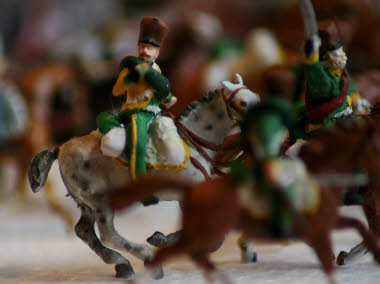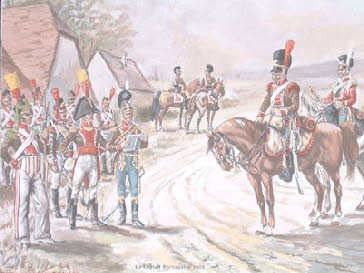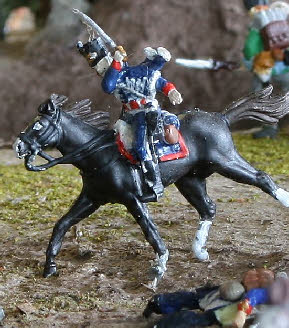
Modelling the Battle of Borodino 1812
Borodino1812.co.uk
Setting the Scene
Borodino was an epic battle pitting Napoleon’s multi-national Grande Armee against the Russian Army. Over a quarter of a million soldiers were present and at the end of the day almost a third had become casualties: up to 40,000 French and well over that number Russian. Some 80 generals were either wounded or killed. To achieve this millions of musket and artillery rounds were expended – although the majority obviously failed to find a target! In all, it was the biggest single-day battle of the Napoleonic Wars – in terms of participants and casualties.
The fletches were three simple earth emplacements situated to the left centre of the Russian position and was the pivotal (but not exclusive) scene for the morning action. Although only just over a square mile in area, some 30,000 troops were wounded or killed before the French won complete control and moved forwards and leftwards. Napoleon directed more guns against this relatively small Russian front than against all the Allied positions at Waterloo.
Although the latest English language book (Borodino by Alexander Mikaberidze) gives more detail then hitherto available, the exact sequence of events and troop movements is still not certain. Early on I decided to depict the second French attack that saw the two main fletches stormed and being held. Württemberg infantry would be holding the northern bastion whilst their cavalry compatriots were in the course of being beaten back by Duka’s Russian Cuirassiers. French troops would be holding the southern fletch whilst Westphalians in the woods, having beaten back Russian Jaegers, were about to be attacked by newly arrived infantry transferred from the Russian right flank. The debris of the first attack would be represented by French light infantry in the southern fortification and line infantry in the woods. This has essentially remained as the template to this day.
One aspect that has had to be addressed is that warfare can, by its very nature, be a brutal affair. A 19th century battlefield at its core ultimately represents men attempting to kill, wound, capture or drive away each other using a multitude of weapons, and these would produce some terrible mutilations, especially from cannon fire. Whilst modestly attempting to portray the affair as it occurred, I nevertheless have ‘air-brushed’ out the very worse excesses.
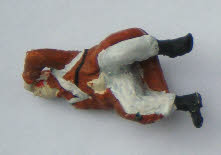 And of course, behind the battle lie the considerable causalities of the whole 1812 Russian campaign, not forgetting the wrong inflicted on the civilian population caught up in the French line of advance.
And of course, behind the battle lie the considerable causalities of the whole 1812 Russian campaign, not forgetting the wrong inflicted on the civilian population caught up in the French line of advance.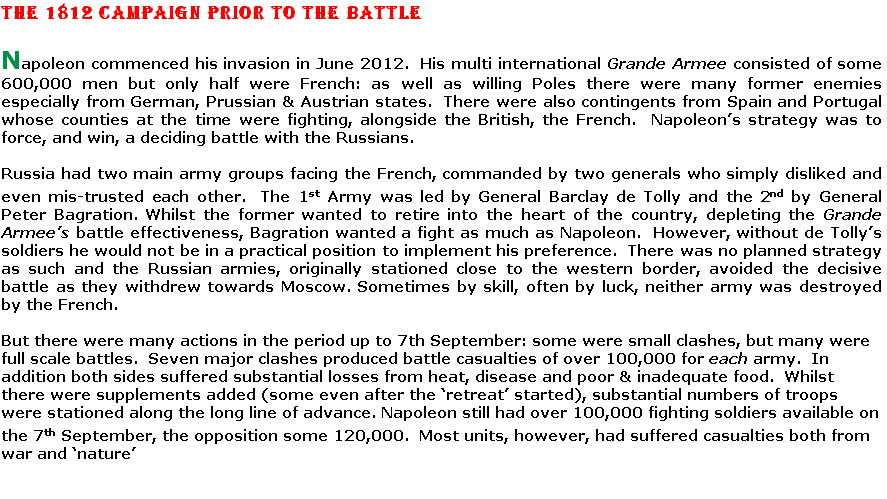
The battle was not just the largest battle of the prolonged Napoleonic Wars but such was the degree of bloodletting that it was probably the highest causality rate for a one day action before the 20th century. Named by the French as The Moskova, the small area and sheer weight of casualties was unusual even for the time. Many generals were killed or wounded: of the two Russian generals, de Tolly had horses killed under him and all his immediate aide-de-camps killed or wounded, whilst Bagration was wounded in the leg whilst defending the Fletches. Despite the obvious preferences he would have received from the Russian medical services he died within the month.
